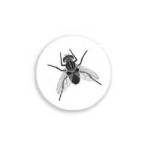The Art Of Nudging: How To Gently Influence Decisions

They all believe in ‘Nudging’.
They all have ‘Nudge Units’ working for their governments and advising them on how to influence public choices simply by presenting these choices differently. It’s called Choice Architecture.
Here’s the example that’s very often given when explaining Nudging because it’s simple yet very effective: changing organ donation from an opt-in to an opt-out option.
Rather than having to say you want to donate your organs (which few people do), your organs will be automatically donated unless you say otherwise. Since most people don’t bother opting-out (too much effort, paperwork…), they accept the new default. As a result, in countries where the change has been made (Belgium, Spain, Wales) the number of donated organs has vastly increased.
How To Nudge
Changing default options, like in the organ donation example, is an easy way to nudge decisions.
Default setting can apply to many areas and works for health improvements too. For example, adding salad to a meal as a default or dressing tables without salt and letting customers ask for some if they need to.
You can also nudge decisions by changing the environment where the choice is made:
- you want people to exercise more, reduce the number of lifts in your building (or increase the time it takes for the doors to close hence making it the slower option) and increase the number of stairs, make them wider and more visible
- you want people to eat more healthily, put the healthy food at the front or at eye level, put the less healthy food further away where it’s more difficult to see and reach
- you want people to eat smaller portions, reduce the size of the plates
Or you can change the presentation of the different options:
- you want to decongest certain areas of a subway system, change the subway map to indicate congestion zones that should be avoided at certain times or alter the distances between stations represented on the map to encourage consumers to go a certain way
Fun works wonders too! It’s called the fun theory and is based on rewarding good behavior with a smile.
- you want your men urinals to remain clean, do what they did in Amsterdam… draw a fly target in the urinals. It greatly improved accuracy and reduced spills!
- you want people to recycle their bottle, do what they did in Norway… turn the bottle bank into an arcade machine counting points and making winning noises when you recycle. It delights children, teenagers and young at heart.
- you want students to take a bridge footpath rather than crossing through cars… watch the clip to see how they made it fun for the students to do the right thing
Is Nudging Magic, Sneaky or Both?
Nudging seems obvious and yet it’s great because:
- it’s subconscious therefore gentle
- it pushes people towards new choices even if by inertia
- in the long term, it can create new behaviors
But is it sneaky?
Yes, choice architecture could easily be perverted and manipulated to manufacture an outcome that’s good for the choice architect and not so good for the person making the … wrong choice for them.
That’s why the inventors of the concept, Richard Thaler and Cass Sunstein, insist in their popular book Nudge: Improving Decisions About Health, Wealth, and Happiness that when using choice architecture:
- choices should not be removed
- new defaults must be made public
- the choice people are nudged towards must be the best one for them
If you follow these rules and remain ethical, nudging is a good skill to add to your toolkit at work or even at home.
Update: More Examples of Nudge Theory in Practice…
We were recently provided the following infographic by our friends at psysci.co to compliment this article. It gives 10 examples of Nudge theory in practice. We’ve already mentioned a couple of them in this article but check it out for 8 more (click on the graphic for a bigger image):
Final Thoughts
If you’ve come across nudging, as a choice architect or someone who who was nudged, let us know.
Or simply if it’s inspired you to try something new…
I’ve added a basketball hoop over my son’s dirty clothes basket. Success!



Comments
The Art Of Nudging: How To Gently Influence Decisions — No Comments
HTML tags allowed in your comment: <a href="" title=""> <abbr title=""> <acronym title=""> <b> <blockquote cite=""> <cite> <code> <del datetime=""> <em> <i> <q cite=""> <s> <strike> <strong>